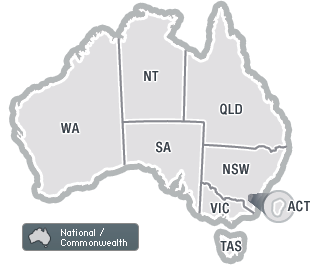Lend Lease has slashed its injury rate by transforming its leadership culture, but hit a stumbling block when it declared a victory on safety prematurely, according to a senior manager.
Vic Hensley, Lend Lease Services' roads general manager, told the SIA Sydney Safety Conference yesterday that shortly after he joined the company in mid-2012, he attended a safety toolbox meeting where 13 senior executives were present.
They weren't there because of their passion for safety, but to satisfy their safety-related key performance indicators before the end of the financial year, he said.
Hensley said he was "appalled", because at this time the property and infrastructure company's injury rate was unacceptably high.
So he and his team set about trawling through Lend Lease's processes and lag indicators to identify ways to improve its safety performance.
"This didn't work, so we decided to embark on a journey of 'felt leadership'," he said.
As part of the process, some 35 leaders, including regional managers, gathered for an intensive two-day seminar, where they discussed the most important things in their lives and sought to determine their health and safety values, which they then made personal commitments to, Hensley said.
From this, the company developed a health and safety charter, which was "taken to the field" where employees committed to it publicly.
The charter, Hensley said, included declarations such as:
- "I respect the safety of my work mates too much to ignore an unsafe act";
- "I will actively promote a culture where people stop a task if they think it's unsafe"; and
- "I will strive to seek a solution rather than avoid a challenge."
Leading by example was crucial, as was getting supervisors on message and passionate about safety, Hensley said.
"If they lead with that passion, everyone else will follow," he said.
The process worked, with Lend Lease's total recordable injury frequency rate (TRIFR) plummeting from 70.7 per million hours worked to 6.8 by 2013, Hensley said.
The safety improvements positively affected the commercial side of the business, while a number of workers reported improving their lifestyle habits and their attitude to safety both at and outside of work, he said.
But it wasn't all good news.
By early 2014 the TRIFR had crept up to 10.3.
"People had started to develop a 'we've got there attitude'," Hensley said.
"We declared victory too soon."
The process, according to Hensley, had lost motivation because there wasn't an ongoing plan – there "wasn't a powerful enough guiding coalition" – and the vision was under-communicated.
"You need to say things 11 times before they sink in."
In response, Hensley said, Lend Lease:
- renewed its focus on planning and leadership;
- retrained supervisors in having "difficult conversations" on safety issues;
- provided more visible leadership in the field;
- revised its training programs; and
- recognised and rewarded "positive behaviours".



